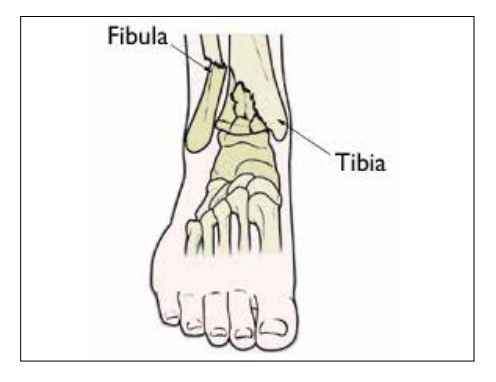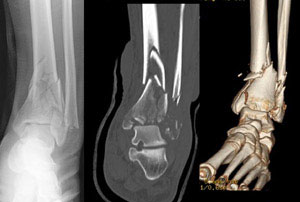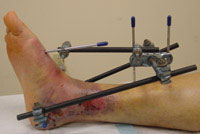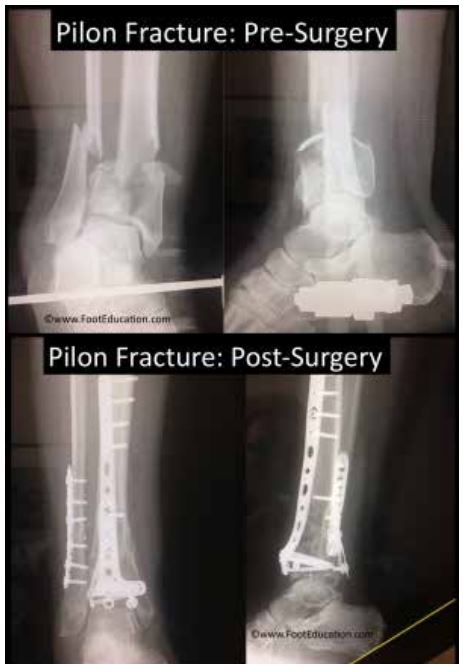WHAT IS A PILON FRACTURE?
A Pilon fracture (*) is a severe injury that involves the larger bone of the lower leg (tibia), and extends into the weight-bearing surface of the ankle joint. It usually occurs following a high-energy impact, such as a fall from a height or a motor vehicle accident.
(*) Pilon is a French word for pestle, an instrument used for crushing or pounding
WHAT ARE THE SYMPTOMS OF A PILON FRACTURE?
A Pilon fracture is a painful injury associated with a fair amount of swelling. It is associated with marked pain, ankle swelling, and distorted anatomy. The injury is often extremely uncomfortable and patients cannot walk on the affected limb.
It is not uncommon for this injury to be associated with bone fragments cutting through the skin – an open fracture. If this occurs, it is necessary to get this treated surgically in an expedited manner in order to minimize the risk of infection.

It is common for patients to have other injuries
HOW IS THE DIAGNOSIS MADE?
A plain x-ray will usually allow the injury to be diagnosed. It will identify the fractures that involve the lower leg bones and extend into the ankle. An additional CT scanner is usually required to visualise the exact fracture pattern and help the surgeon understand the nature of the fracture, which varies considerably from one patient to another.
TREATMENT
Treatment is often surgical if the fracture is displaced. The surgeon attempts to restore the shattered bone back to its original position. It often takes many months for the fracture to heal and more than a year for the patient to reach their point of maximal improvement. Some ankle arthritis and joint stiffness is common even with optimally treated Pilon fractures. Rehabilitation plays an important role in the recovery process.

Non-Operative Treatment
Occasionally, either because the fracture is nondisplaced or because surgery is contraindicated (too risky), the patient can be treated without surgery. Non-operative treatment requires a prolonged period (10 to 12 weeks) of non-weight-bearing to allow the fracture to heal. Patients are usually placed in a splint and cast during that time and use crutches.
Operative Treatment
Most Pilon fractures in otherwise healthy individuals are surgically treated. This is often performed once the swelling has settled. This means that the surgery will be performed a number of days or even weeks after the original injury. During this time, the foot will be elevated and sometimes it will be placed in an external frame (external fixator) to help stabilize the soft tissues that are often significantly damaged after this type of injury.
The surgery itself can be quite complex. It essentially involves repositioning the fractured bone fragments back into the right position. It is particularly important that the bone that makes up the top part of the ankle joint (the tibial plafond) be restored to as close to a normal (anatomic) position as possible.

This surgical procedure is performed through several skin incisions. Once the fractures are provisionally fixed with wires, they are definitively stabilized with plates and screws. Sometimes the smaller bone located on the side of the ankle joint (the fibula), is also fractured and requires fixation.
Following the surgery, the patient is kept non-weight bearing until the bone heals, which often takes 10 to 12 weeks or more. During this time the patient uses crutches, a knee walker, a wheelchair to mobilise.




